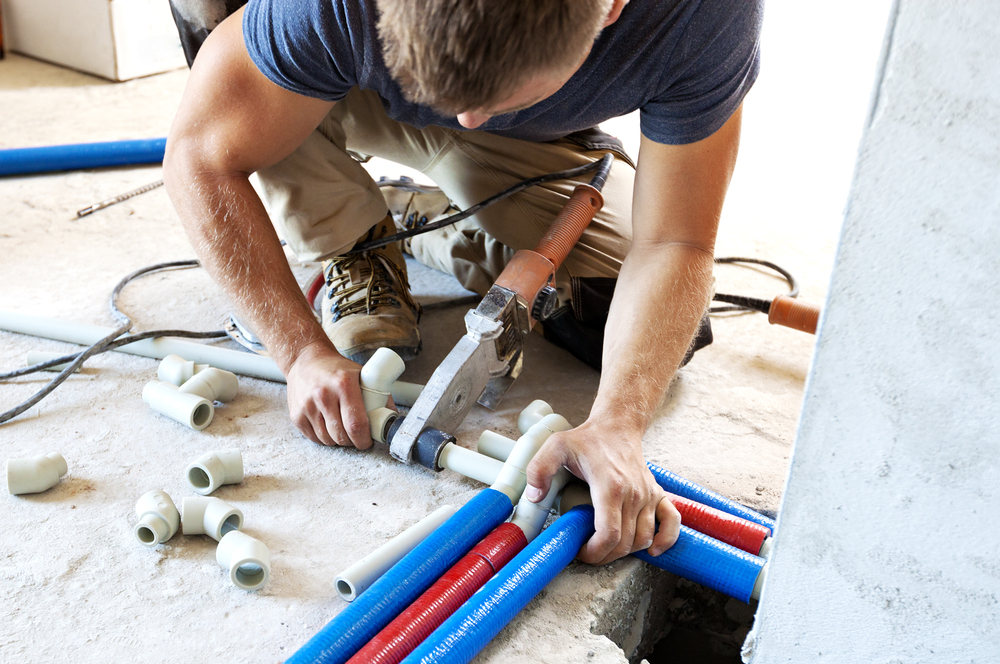Top-Rated Plumber Alabaster AL Ready to Offer You Anytime
Top-Rated Plumber Alabaster AL Ready to Offer You Anytime
Blog Article
A Detailed Overview to Effective Hot Water Heater Installation for Optimum Performance
Embarking on the job of setting up a water heater is an endeavor that demands accuracy and a systematic strategy for accomplishing optimal performance. As you continue, the ins and outs of connecting water supply lines and establishing up reputable electrical or gas links await, appealing insights into ensuring performance and reliability.
Picking the Right Water Heating Unit

Next, think about the dimension and ability of the water heater. It's vital to analyze your household's warm water requirements, which can differ based upon the number of residents and their use patterns. A device that's as well tiny might lead to insufficient warm water, while an oversized model might result in unnecessary energy consumption.
Efficiency ratings also play a critical function in selection. Search for hot water heater with high Energy Element (EF) scores, indicating exceptional performance and decreased energy usage. Tankless models, though generally much more costly in advance, deal considerable power cost savings gradually as a result of their on-demand home heating capacities.
Preparing the Installment Location
Before mounting a new water heating system, careful preparation of the setup area is necessary. It's vital to measure the room carefully to suit the water heater's measurements, ensuring appropriate clearance around the device for efficient procedure and servicing.
Examine the floor for stability, as the water heating unit will require a strong, degree surface to operate successfully. If essential, install a drip pan underneath the system to capture prospective leaks or spills, stopping water damages to the surrounding area.
Furthermore, make sure that all needed tools and materials are on hand before starting the installation. This consists of things such as wrenches, screwdrivers, a level, and any additional equipment required for protecting the heater and placing. A well-prepared setup area establishes the structure for an effective hot water heater setup, optimizing efficiency and security.
Connecting Water System Lines
When attaching water system lines to your recently installed water heater, it is essential to make sure that all links are safe and leak-free to maintain effective procedure and avoid water damages. Begin by determining the hot and chilly water supply lines. The cool water inlet is usually noted with a blue tag or a "C", while the hot water outlet is noted with a red label or an "H".
Use adaptable water heater ports to promote a less complicated installation procedure. Prior to affixing the ports, put a plumbing technician's tape around the threaded ends of the water heating system's inlet and electrical outlet pipelines.
When connections are in area, slowly activate the primary water system shutoff. Examine each link for leaks by aesthetically feeling and inspecting for moisture. Tighten up links as essential, and ensure the stress alleviation shutoff is correctly mounted, protecting against excessive stress accumulation.
Establishing Electrical or Gas Connections
Effectively establishing up the electrical or gas links for your water heating system is a vital step to make sure efficient and safe procedure. For electric water heating units, start by verifying that the electrical circuit is compatible with Full Article the heating system's voltage and amperage needs. Make sure the power supply is transformed off at the circuit breaker to stop crashes. Connect the electrical cables to the heater adhering to the producer's circuitry diagram. Normally, this entails connecting the ground cable to the eco-friendly terminal, and the continuing to be cords to their equivalent terminals, safeguarding each with cable nuts.
For gas hot water heater, safety and security is paramount. Validate that the gas supply is off before continuing. Attach the gas line to the water heater making use of a flexible gas connector, ensuring it is appropriately threaded and secured with pipeline joint substance or Teflon tape appropriate for gas links. Tighten up the links with a wrench, making sure not to over-tighten (Plumbing Alabaster AL).
As soon as connections are made, evaluate for any possible leaks. For gas lines, apply a soapy water solution to the joints; bubbles suggest a leakage. For electrical links, double-check that all wiring is safe and correctly insulated, preserving compliance with neighborhood electric codes.
Testing and Readjusting for Performance
With the electric and gas links safely in place, the next step is assessing the functional effectiveness of your water heating unit. Begin by meticulously turning on the water supply and making sure there are no leaks at any of the valves or joints.
Following, perform a detailed evaluation to ensure the burner or gas burners are operating properly. For electric heaters, use a multimeter to confirm if the aspects are attracting the suitable existing. In gas go to website designs, observe the heater fire; it should be consistent and blue, suggesting effective combustion.
Readjust the settings as needed to remove inadequacies. Consider executing insulation procedures, such as including a hot water heater covering, to better enhance efficiency by reducing warm loss. In addition, examine the anode pole's problem, as a worn-out pole can reduce performance and lead to container corrosion.
Conclusion
Reliable water heater installment is important for ensuring ideal performance and energy financial savings. Securely attaching water supply lines and very carefully setting up electrical or gas connections lessen prospective problems.

Properly establishing up the electrical or gas links for your water heating system is a vital action to ensure efficient and risk-free operation. For electrical water heating units, begin by validating that the electric circuit is suitable with the heater's voltage and amperage needs. Connect the gas line to the water heating system using a flexible gas port, ensuring it is appropriately threaded and secured with pipe joint substance or Teflon tape ideal for gas links.
Report this page